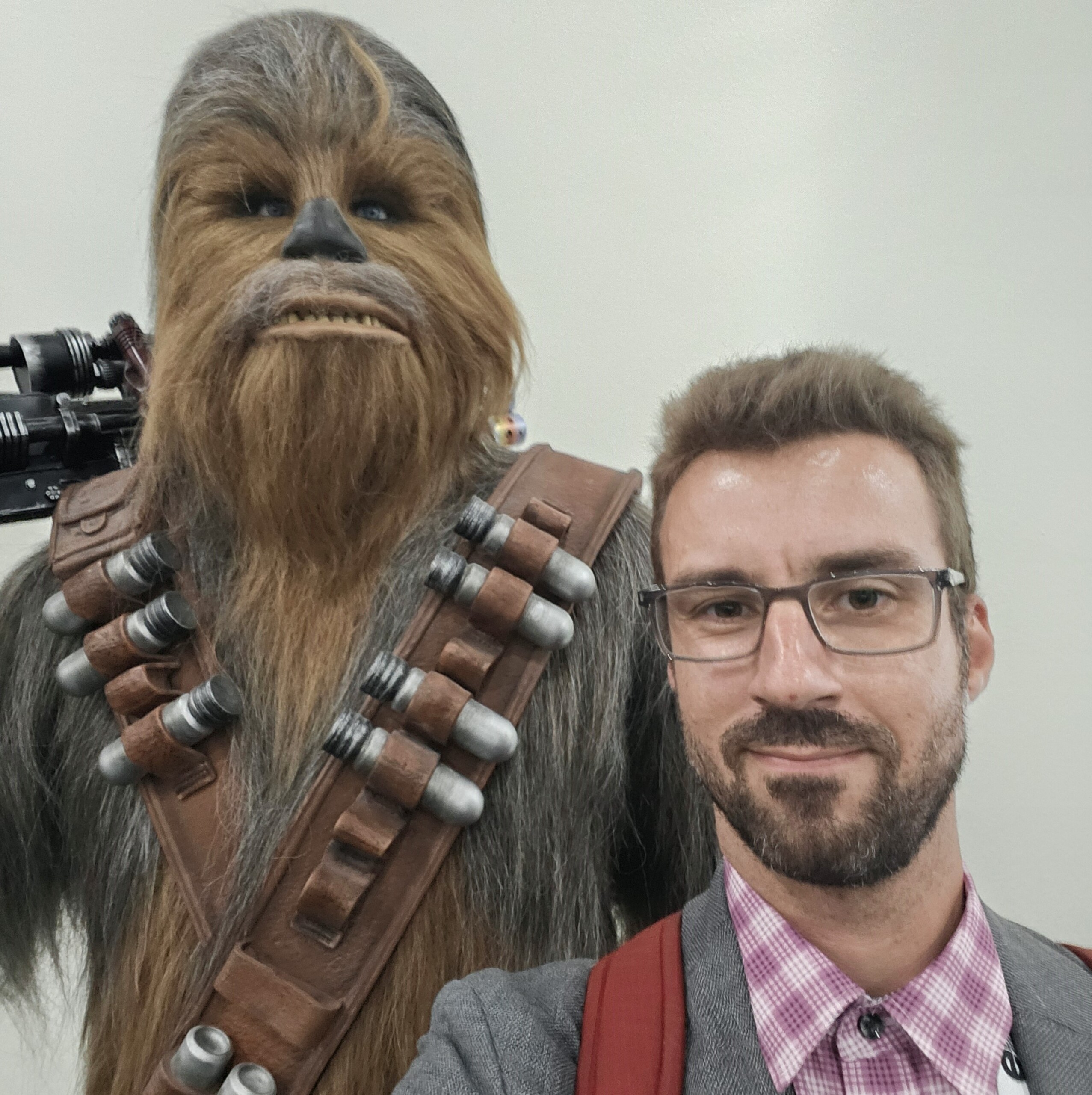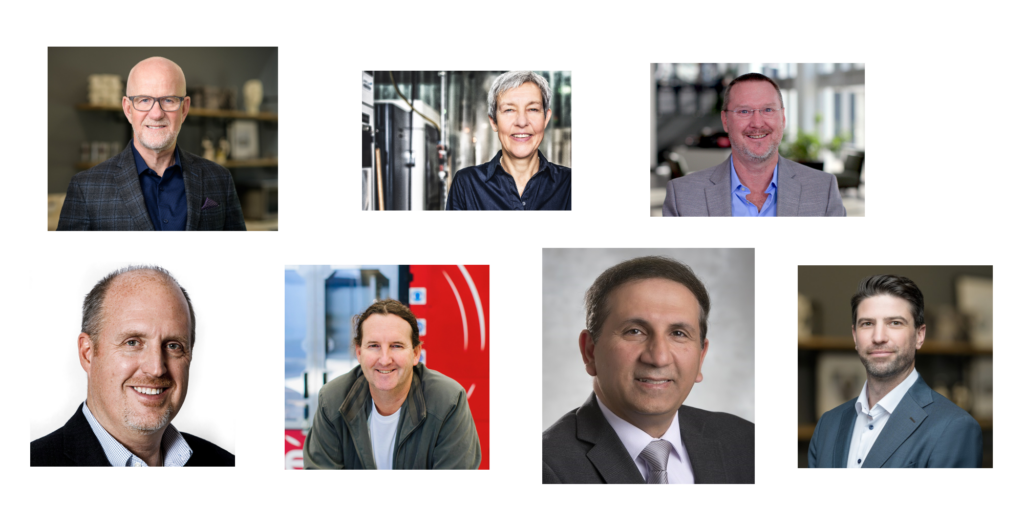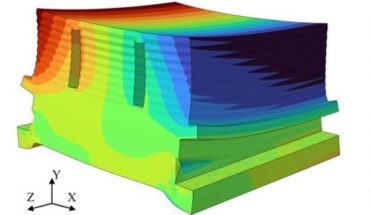An exclusive interview with experts from EOS, 3D Systems, Materialise and more on the positives and negatives of the past year in 3D printing.

2024 marked my first trip to RAPID and a chance to grab a selfie with one of my idols.
Say what you will about 2024, it certainly wasn’t a dull year in additive manufacturing (AM).
For an industry that’s been effectively pronounced dead or, less dramatically, criticized for failing to live up to the hype (which is often amounts to the same thing in tech), AM looks to be capping off the first quarter of the 21st century with something approaching renewed optimism.
It hasn’t always been a smooth ride, and there will certainly be more bumps along the road ahead, but for the first time in several years, it’s looking like we might actually reach our destination. That much vaunted goal (almost) goes without saying: widespread additive manufacturing for the production of end-use parts.
Looking back on 2024, we may well see this year as the tipping point for additive manufacturing. But how do you sum up an entire year in the AM industry in just a few hundred words?
You go to the experts.
Engineering.com spoke with industry leaders and some of the brightest minds in the world of additive manufacturing to get their perspectives on 3D printing developments in 2024, both on the positive side, and on the challenges currently facing the industry.

Let’s start with the good news.
Positive developments in additive manufacturing in 2024
EOS on additive manufacturing as a compelling competitive advantage
“I am of the opinion that industrial additive manufacturing has now reached an inflection point. Large OEMs, government agencies and other organizations have gone through lengthy application qualification processes and have reconciled themselves to designs that can only be produced with additive manufacturing. There is no turning back now; the primary challenge is scaling.”
–Glynn Fletcher, President, EOS North America
“To add to Glynn’s point, last year we saw companies that adopted additive manufacturing pull away from their competition. For instance, Align Technologies in the dental industry and SpaceX have shown how additive can simplify production and drive competitive advantage. Organizations are moving from prototyping to full production, and they’re truly making money with the technology.”
-Gregory Hayes, SVP Global, Additive Minds
3D Systems on materials as the key driver to AM expansion
“Historically, we’ve excelled at prototyping. We’ve been good at that for years. But now, as we look forward, it’s about transitioning to end-use parts. Prototyping will still be critical, but the future growth lies in delivering reliable, stable end-use components.
“Materials are key to driving this shift. Long-term material stability, chemical compatibility, and other performance factors are areas where the industry is getting better. These improvements will help enable more widespread use of additive manufacturing for end-use applications. It’s encouraging to see more companies embracing these possibilities. Our industry’s overall growth benefits everyone, and seeing that momentum is inspiring.”
-Marty Johnson, VP of Product and Technical Fellow, 3D Systems
Boston Micro Fabrication on high-end and low-end expansion
“Expansion of the industry at both the high and low ends [was the most significant positive development in 2024]. At the high end, metal production technologies continue to evolve to meet real customer needs. At the low end, printers can be purchased for $1,000 that meet many of the needs that were fulfilled by more expensive technologies only a few years ago. Technical and production capability is expanding at the high end. Reach and democratization is occurring at the low end.”
-John Kawola, CEO, Boston Micro Fabrication
SPEE3D on AM expansion in the defense sector
“In the industrial sector, the uptake of defense is a key driver in 2024, globally—from the EU to the US, to Australia, and Asia. Looking back five years, we had seen defense as a key market for us early on, but in Europe, we wouldn’t even discuss defense at Formnext. This year, we brought our big defense printer to Formnext and were swamped with interest. That’s a major mindset shift in the European market—defense is now seen as something to support, and defense itself is saying it needs AM to support its operations.
“In North America, there’s always been a focus on defense, so that hasn’t shifted much. But globally, we’ve seen defense stepping forward and understanding the value propositions AM offers. Each technology has its role, and the key is articulating that to the defense sector, which is now responding with significant interest. [The driver there is] 100% the supply chain. It spans everything from high-volume to niche, one-off products, covering low-end to high-end. Additive manufacturing now has a market for most of the technologies being produced, but it’s entirely supply chain-focused.”
-Byron Kennedy, CEO, SPEE3D
MSAM on consolidation and AI
“From my perspective, one of the most positive developments in AM in 2024 has been the consolidation of some of major players in the field, which has helped stabilize the industry to some extent. The survival of stronger companies following the settling of initial hype has fostered a more sustainable and focused ecosystem for innovation and growth in AM.
“Additionally, the continued emphasis on the convergence of AI integration, hybrid manufacturing systems, robotics, and the expansion into new materials and applications has significantly driven the industry forward. These advancements have collectively enhanced efficiency, fostered innovation, and supported broader adoption of AM technologies across various sectors.”
-Ehsan Toyserkani, Research Director, Multi-Scale Additive Manufacturing Lab
Materialise on the importance of industry collaboration
“Perhaps the most significant positive development in additive manufacturing in 2024 was the industry’s growing acknowledgment that collaboration is essential to address the most pressing challenges that manufacturers face in adopting and scaling 3D printing technology for industrial use.
“One standout example of this collaborative effort is the formation of the Leading Minds Consortium. This group, which includes Materialise and other leading companies such as Ansys, EOS, HP, Nikon SLM, Renishaw, Stratasys, and TRUMPF, is dedicated to addressing these barriers.
“The consortium’s first initiative focuses on creating a common language framework for 3D printing to resolve the fragmentation and confusion caused by inconsistent terminology. By standardizing communication across the industry, this effort helps manufacturers integrate AM solutions more effectively into their operations.”
-Brigitte de Vet, CEO, Materialise
Challenges for additive manufacturing in 2024
Every silver lining’s got a touch of grey, or so it’s been said, and that’s true for the AM industry in spite, or even because of the positive developments we’ve seen in 2024. Here’s what our experts said about the biggest challenges for additive manufacturing over the past year.
EOS on the perils of AM hype
“One of the biggest challenges is self-inflicted. This industry has a tendency to overpromise and underdeliver—to investors, shareholders, and customers. Industrial additive manufacturing isn’t plug-and-play; there’s a steep learning curve, and the technology must work as promised. Organizations need strong engineering and application support to succeed, but some suppliers have failed to deliver this, leading to negative publicity.”
–Glynn Fletcher, President, EOS North America
“Glenn is right. The doom and gloom in the industry over the past 12-18 months has been significant. On top of that, there’s a challenge with new technologies like AI and advanced manufacturing. Some organizations feel overwhelmed by the scope of implementing additive manufacturing and give up. The successful companies, however, focus on solving today’s practical problems rather than trying to overhaul their entire supply chains.”
-Gregory Hayes, SVP Global Additive Minds
3D Systems on the importance of transparency
“In my view, we need to move away from hype and focus more on delivering tangible results. Customers want data. They want to see evidence. When I talk to customers, I emphasize transparency—showing them real data and demonstrating reliability.
“We’ve made strides in providing robust material data sheets, but we need to go further. Additive manufacturing must meet the same rigorous standards as traditional manufacturing methods. Transparency builds trust. If customers don’t trust the data we provide, it’s hard for them to commit to our solutions.
“Understanding the application is also critical. For example, if a part is biocompatible, we need to know how sterilization methods impact it. Does it maintain its mechanical properties after sterilization? These are the kinds of questions we need to answer to drive adoption.”
-Marty Johnson, VP of Product and Technical Fellow, 3D Systems
Boston Micro Fabrication on sustainable business models
“There are many technology vendors (hardware, materials and software) that have been born in the last 10 years. The technologies coming from these vendors are significant and have really helped move the capability of customers building and manufacturing new products. However, many of these vendors are now struggling to create sustainable business models for themselves. They may have products that customers value, but they also need to make enough money to exist.”
-John Kawola, CEO, Boston Micro Fabrication
SPEE3D on new suppliers and certification
“Initially, I thought the rise of Asian suppliers might be a challenge. But while that’s a challenge for incumbents, for new entrants, it’s an opportunity. So it depends on where you sit.
“In the industrial sector, one of the key challenges is compliance and certification. This isn’t new—it’s been discussed for five years—but in areas like the submarine industrial base or defense, certification and compliance remain significant hurdles.
“AM has historically struggled in this area, especially with metals. Achieving certification for metal powders is incredibly challenging. Whether it’s possible to get to 100% certification remains to be seen, and industries are now exploring different technologies to address these challenges.”
-Byron Kennedy, CEO, SPEE3D
MSAM on rebuilding trust
“[The biggest challenge for the additive industry in 2024 has been] re-building trust among end-users and addressing the overpromising often associated with start-up and new companies.”
-Ehsan Toyserkani, Research Director, Multi-Scale Additive Manufacturing Lab
Materialise on profitability in additive manufacturing
“The biggest challenge for many companies active in the additive manufacturing (AM) industry has been the persistent struggle for profitability. While 3D printing has established its value across numerous sectors, many companies in the industry—particularly startups and publicly traded firms—continue to face financial difficulties. This situation highlights a gap between the promise of AM and its scalability into cost-effective, high-volume production. The AM industry’s path forward lies in identifying and embracing its role within broader industrial ecosystems.
“To address this, the industry may need to adopt a more balanced approach to the role of 3D printing in manufacturing. 3D printing should be seen as a supporting role rather than a standalone solution. Traditional manufacturing methods will continue to lead, but AM can complement them by enhancing flexibility, efficiency, and design innovation.
“A compelling example of this balance is seen in the production of millions of 3D-printed metal hinges for foldable phones in China. While the overall manufacturing process relies heavily on traditional methods, these 3D-printed components offer a level of design precision and functionality that would be challenging to achieve otherwise. This demonstrates how AM can integrate strategically into existing workflows.”
-Brigitte de Vet, CEO, Materialise
What does 2025 hold for additive manufacturing?
The end of the first quarter of the 21st century is very much uncertain. Between the political, socio-economic and environmental shifts happening across the globe, it’s difficult to say whether we’ll look back on the beginning of this century as a turning point toward a better world or the beginning of the end to life as we know it. If history has taught us anything, it’s that the future is impossible to predict. At this moment, it’s difficult to say whether the optimist is being naïve or the pessimist is being overly cynical.
Regardless, there are good reasons to think that 2025 will be a good year for the AM industry. Stay tuned for the companion article to this piece at the start of the new year to find out what our experts see on the road ahead for additive manufacturing.





